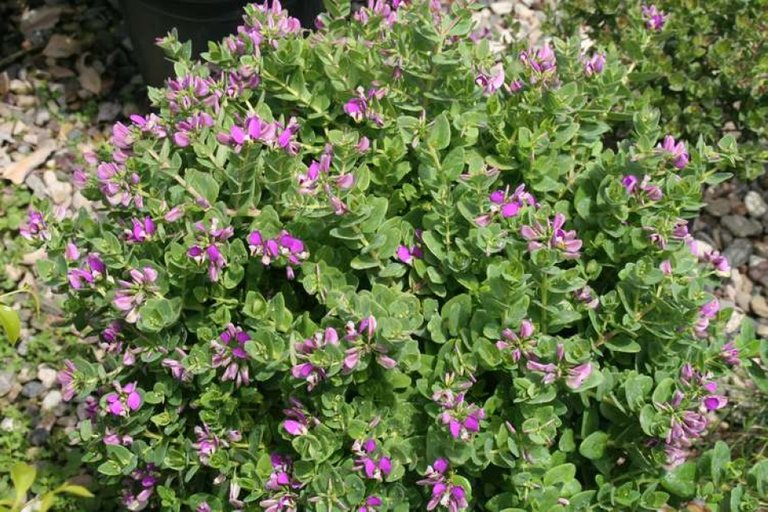The bilaterally symmetrical flowers superficially resemble those of the Fabaceae, but the structures are not homologous. Of the 5 sepals, the 2 lateral ones are large and petaloid, usually as large as the petals; the petals are 3, the lower one forming a keel which encloses the stamens and style and usually has a fringe or appendage near the end.

The stamens are 6 (in P. paucifolia), 7, or 8. The seeds are pubescent and bear an aril (or aril-like structure), which apparently aids in dispersal by ants. Some species also produce reduced cleistogamous flowers, underground or above ground; except when explicitly stated, the key does not refer to these. The lowermost leaves are often reduced to scales.

- Flowers 1–4 (–5) on each stem, (12–) 15–20 (–22) mm long, the wings readily deciduous; well-developed leaves few, crowded toward summit of stem.

Flowers numerous, ca. 3–7.5 mm long, the wings persistent; well-developed leaves several to many (or often none at anthesis in P. incarnata).
Leaves (at least the lower ones) whorled (or opposite, look for scars if necessary).

- Well-developed inflorescences ca. 10–15 mm broad, sessile or on peduncles at most ca. 5 mm long.
- Well-developed inflorescences ca. 3–5 mm broad, on distinct peduncles usually 1–5 cm long.
magoo-2 found a series of multi accounts of a same owner is following your articles to cheat your generous rewards.
magoo-2 found these accounts are suspicious & can be multi accounts of a single owner. Conclusion is based on last 30 days transactions:
@kilee @ripon1 @googlefighter @melianasagita @ashasikder @hichako @sadikulaziz
magoo-2
Check our latest multi comment spam update report